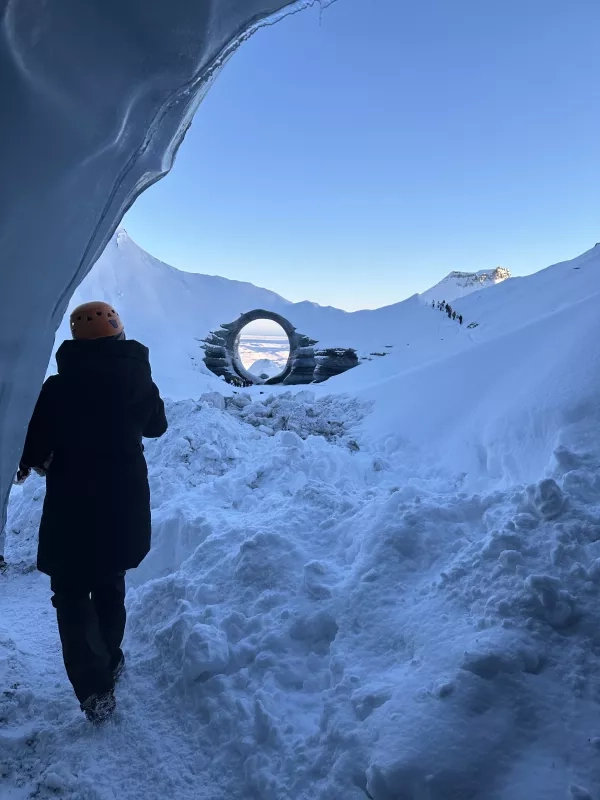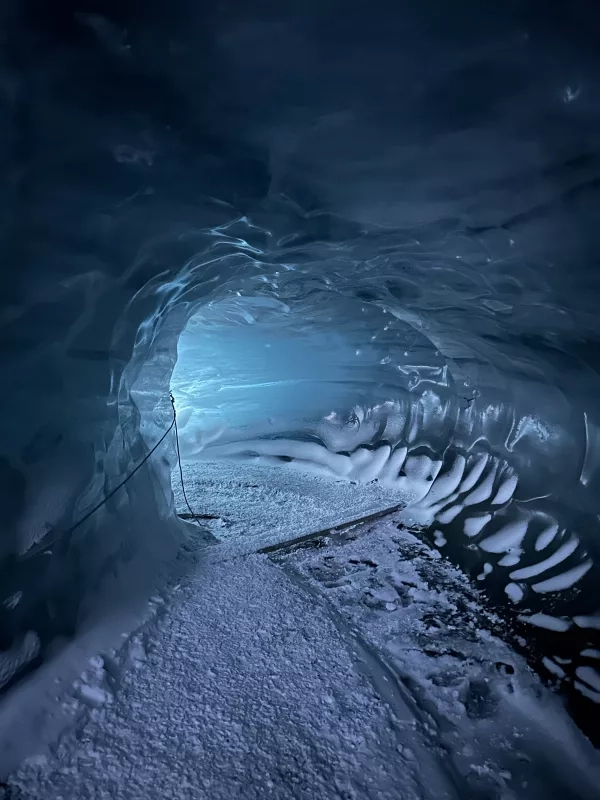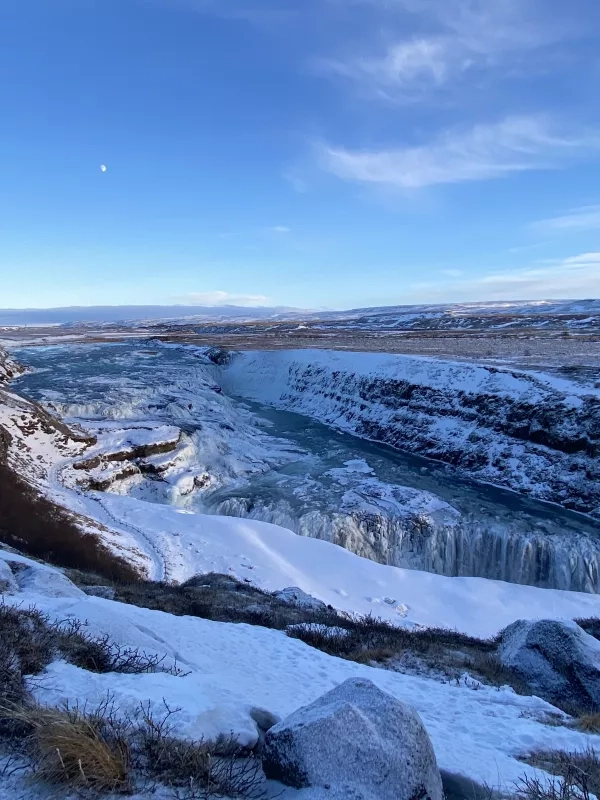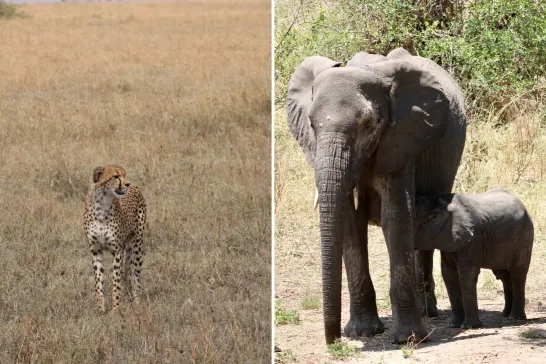
Waterfalls to thermal baths: the top places to visit in Iceland
7 Minute Read
Iceland is a land of otherworldly beauty, with thousands of cascading waterfalls, breathtaking black sand beaches, and glacier-capped mountains that create a landscape unlike anywhere else on Earth. With so much natural wonder to explore, you may wonder what attractions to add to your Iceland travel itinerary.
From soaking in the iconic Blue Lagoon to chasing the Northern Lights, here are Iceland's top places to visit.
The Blue Lagoon
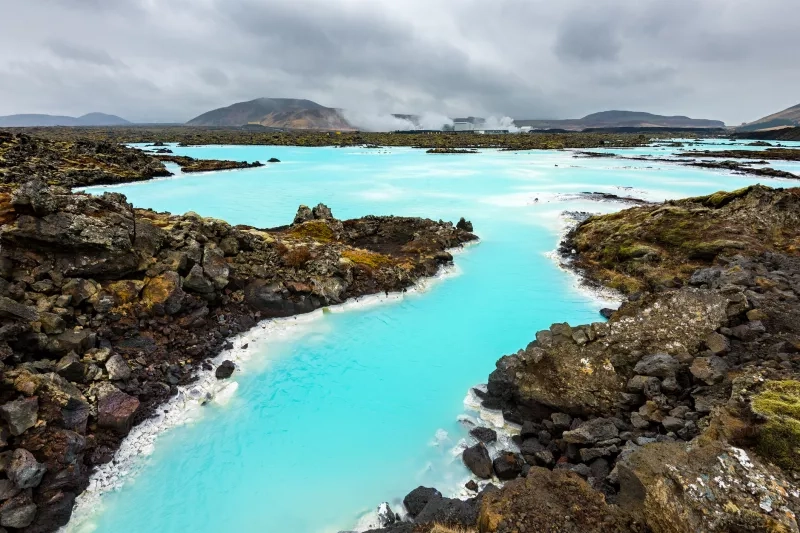
Discover the healing powers of geothermal seawater at Iceland's famous Blue Lagoon. You'll feel rejuvenated after soaking in the steamy blue water, surrounded by natural elements, including lava rock. The main attraction is the lagoon pool, but there are many other wellness features to enjoy.
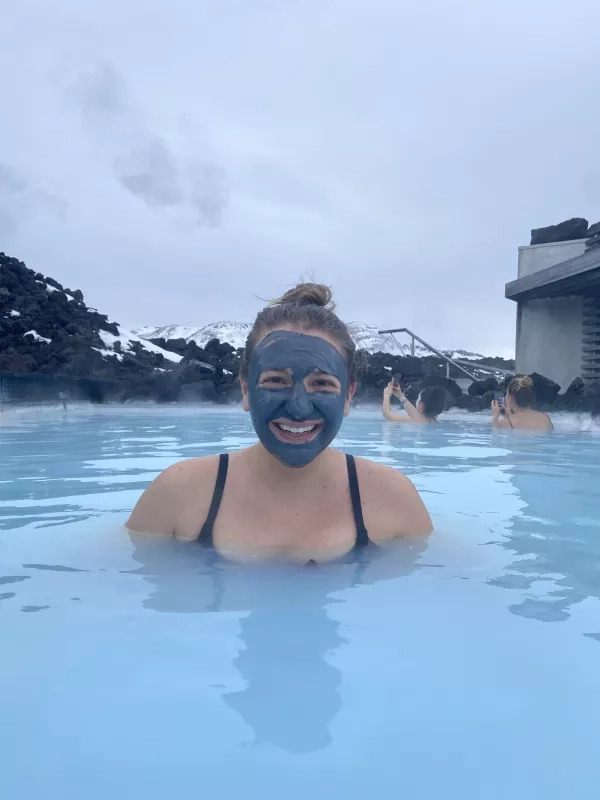
Cover your face in a silica mud mask at the swim-up mask bar, sweat it out in the sauna room or steam cave and reserve additional treatments at the Retreat Spa. You can also book an in-water massage. Grab a drink of your choice at the in-pool bar and expect to spend about two hours in the water, depending on how much you enjoy floating and relaxing.
There are multiple restaurants where you can experience gourmet cuisine or a café where you can find a casual bite. You can ride a city bus from Reykjavik to the Blue Lagoon or reserve a spot on the transfer bus when reserving your spa time slot.
Alternatively, there are other thermal spas across the country, each with unique features and experiences. Envelop yourself in nature at the Mývatn Nature Baths, enjoying the soothing waters and natural minerals of a geothermal bath. It's located near the town of Akureyri, a stop along the Iconic Iceland, Greenland and Canada trip or Iceland's Majestic Landscapes tour with Viking Cruises.
Katla Ice Caves
|
|
|
Katla Ice Caves are a year-round destination where you can traverse a volcanic glacier and climb through a glistening ice cave with an Icelandic tour guide. Surrounded by mountains and a stunning landscape of white during the winter months, you can make your way up a glacier to a frozen cavern of turquoise blue. Tunnels, natural sculptures and towering ice walls are ready to be explored.
Departing from the town of Vik, with the option to transfer from Reykjavik, a Jeep will drive you to the edge of the Myrdalsjokull glacier. The famous glacier and the attached Kötlujökull glacier cover Volcano Katla, from which an enormous ice mass creates beautiful ice features. All equipment needed, including a helmet and crampons, is provided on the tour so you can continue from the glacier into icy tunnels.
There are other natural ice caves to see in Iceland, with Katla Ice Caves being the easiest to visit, especially if you have limited time, and it is one of the few in the country accessible any month. The cave's appearance constantly changes, particularly from season to season and year to year. Even if you've been there previously, you're in for an entirely new experience if you tour the caves again. Dress warmly!
The Golden Circle
|
|
|
The Golden Circle is the most famous of the country's sightseeing routes and an excellent introduction to Iceland. Highlighting three main stops – Þingvellir National Park, Gulfoss Waterfall and Geysir Geothermal Area – you're in for a day of stunning natural landscapes with some surprises along the way.
Þingvellir National Park is a UNESCO World Heritage Site and a filming location for Game of Thrones throughout season four. The historically and geologically significant site is where Iceland's parliament was founded and where you can visibly note where two tectonic plates split apart.
Gullfoss Waterfall is a powerful 105-foot-tall cascade with a two-tier drop into a massive gorge, and you can admire it from multiple walking trails. Bundle up as you'll often feel the mist hitting your cheeks, especially on the lower viewing platforms come summer.
The Geysir Geothermal Area is one of the few places in the world where active geysers spontaneously shoot water from the Earth. Walk by sulphurous mud pots as you approach the geysers. The Great Geyser, which all others are named from, is currently inactive, but the smaller geyser Strokkur reliably bursts boiling water into the air approximately every 10 minutes.
Its proximity to Reykjavik and the airport and the relatively short drive between attractions make it a convenient addition to any itinerary. It is one of the featured excursions from Reykjavik on Iceland's Natural Beauty cruise through Viking Cruises.
Black sand beach
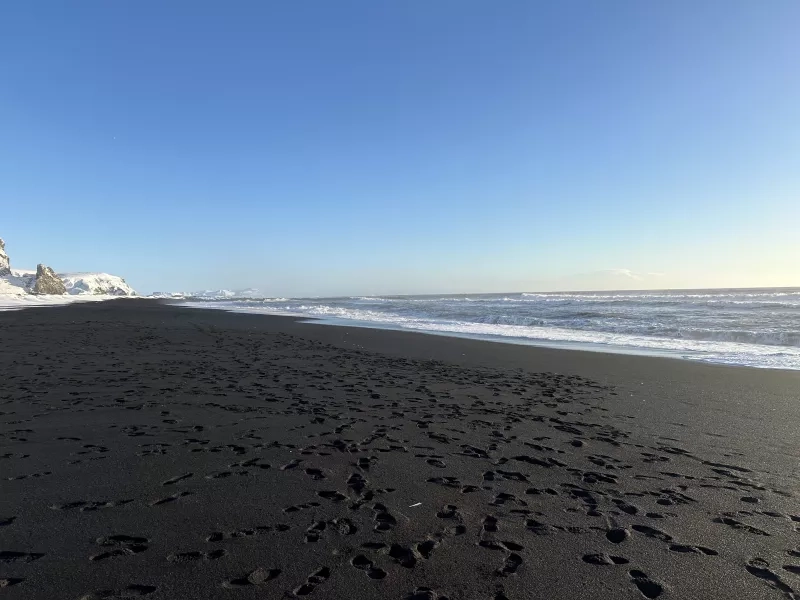
Iceland is a country full of volcanic activity, and its beaches are covered in black sediment from basalt fragments that follow an eruption. Since Iceland is still volcanically active, the black sand is often replenished and is one of the stunning natural phenomena that draws visitors to the country.
The most famous black sand beach in Iceland is Reynisfjara Beach, located in the southern part of the island, near the town of Vik. From the hauntingly beautiful shore, look out to the vast ocean to admire the basalt columns down the beach and towering rock formations being hit by incoming waves. You can get up close and personal with the basalt columns' majestic walls of black rock, shaped in near-perfect octagonal figures.
The tide can change quickly, and there are strong coastal waves, so this is not a safe place to swim.
Many other black sand beaches around Iceland, such as Víkurfjara, are also close to the town of Vik. Others include Djupalonssandur, Sandvik, Diamond Beach and Solheimasandur.
Two Viking Cruises itineraries, Iceland's Natural Beauty and Iconic Iceland, Greenland and Canada, include a stop in Djúpivogur on the east coast. Here, you can enjoy nature walks and excursions to see striking black sand beaches, which form a land bridge to several nearby islands.
Seljalandsfoss
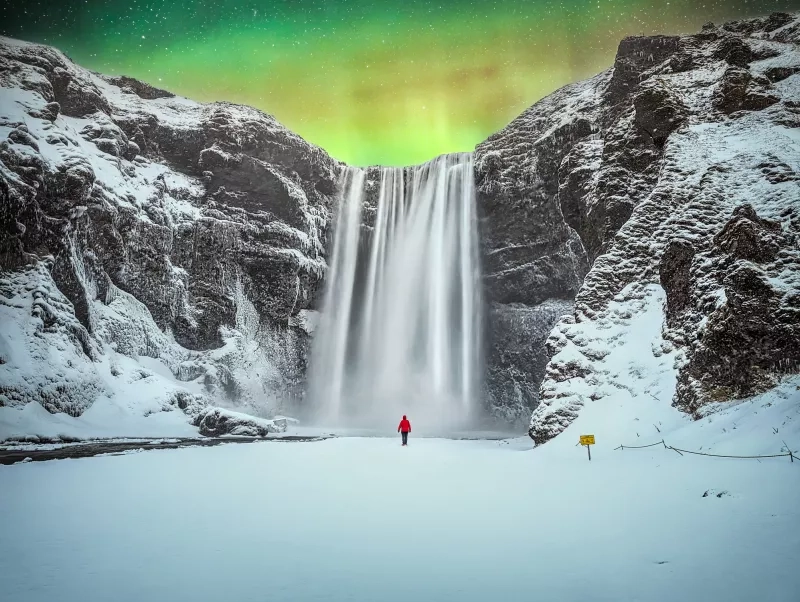
Iceland is estimated to have about 10,000 waterfalls, all as diverse as they are beautiful. With its near-Arctic location, towering mountains, volcanic activity and glaciers, these gorgeous cascades flow year-round.
On the south coast, you can walk behind a 60-metre waterfall, feeling the powerful mist on your face, but prepare to get wet. Seljalandsfoss is a relatively narrow stream that shoots from a towering cliff. Its most unique feature is the natural pathway wrapping around the falls into a cavern. In the summer, it's surrounded by a green and rocky cascade covered in ice and snow come winter. The water comes from the Eyjafjallajökull glacier – the volcano of the same name that famously erupted in 2010.
If you're driving the Ring Road in a rental car or enjoying a day trip tour of South Iceland, you'll likely also pass Skogafoss, as it's just 30 kilometres from Seljalandsfoss. Skogafoss is one of the largest waterfalls in Iceland at 60 metres high and 25 metres wide.
Northern Lights

One of the top reasons to visit Iceland during the winter is to catch the aurora borealis. Tourists flock to northern countries such as Iceland to stare at the night sky, looking for dancing green lights with possible hints of pink and purple. The best time to see the Northern Lights is between late September and late March. You'll want to look up at the sky when it's clear and dark, at midnight or later, so prepare to stay up late and bundle up.
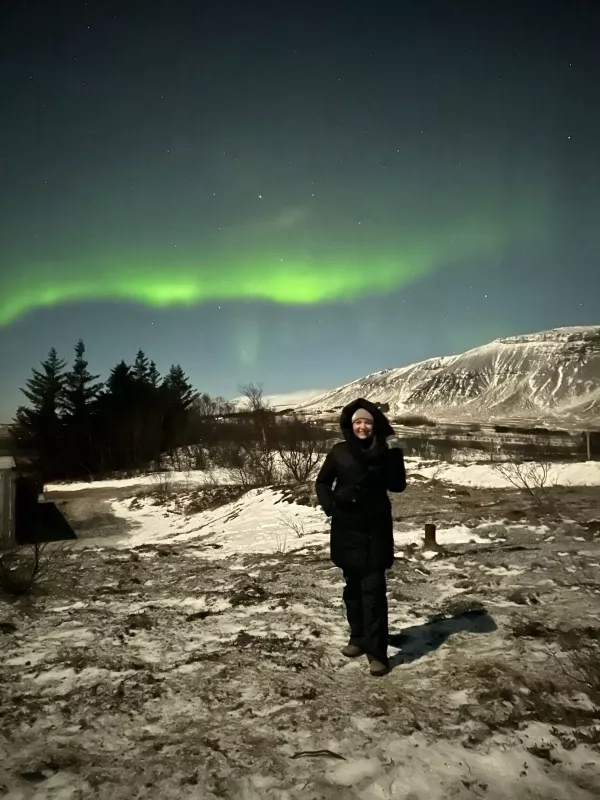
You may witness this spectacular phenomenon right in the capital city, with a higher likelihood of seeing the Northern Lights if you stay in a smaller village with less light pollution. If it's a dream to cross this off your bucket list, make sure not to visit during a full moon and keep your eyes on the aurora forecast for the best chances to spot the lights.
Consider booking a Northern Lights Tour to hunt for the aurora borealis with a small group. One of the most popular options is hopping into a small bus or jeep and driving away from the city as your guide monitors where the glowing phenomenon is best. These tours typically leave at 8:30 p.m. or later, with many including hot chocolate as you wait and lasting about three to five hours.
Reykjavík

Visiting the country of fire and ice, you may not assume that one of the top things to do is explore the streets of a capital city. More than just your home base for tours, trips, and excursions, Reykjavik has many sights, activities, and cultural experiences.
Don't miss out on a stroll along the waterfront, admiring the harbour, the volcanic rock and landmarks along the way. The Harpa Concert Hall is an architectural work of art and a concert venue.
Hallgrímskirkja Church is the symbol of Reykjavik. It is also the tallest building in the city and has a unique design that seems to resemble the basalt rock columns you can find across Iceland. The church is only a few blocks from Laugavegur, the city's main shopping street, which has many cafés and restaurants. Rainbow Street is another fun visit, with a colourful mural painted beneath your feet.
While many of the traditional foods Iceland is known for are dishes you may not find appealing, like fermented shark and sheep's head, there are modern options you'd be likely more willing to try, such as an Icelandic hot dog (pylsur), cinnamon rolls (snúður) – grab one at Braud & Co, and year-round ice cream mixed with candies or nuts (Bragðarefur). Restaurants offer a variety of cuisine and have a hygge atmosphere complete with flickering candles.
Viking Cruises offers multiple Scandinavian trips that include a stop in Reykjavik, Iceland. These trips include Iceland and Norway's Arctic Explorer and Iceland's Majestic Landscapes. Extend your vacation by a day or two to have additional time to explore the capital city.
Explore the land of fire and ice
Viking Cruises has many itineraries that include exploring Iceland. Book an appointment with a CAA Travel Consultant to plan the journey of your dreams. CAA Members can take advantage of perks like a $100 per person onboard spending credit on eight to 11-day adventures with Viking Cruises.

